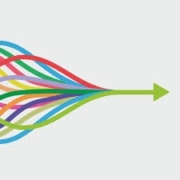 Print Friendly Version
Print Friendly Version
What is a stretch IRA?
“What is a stretch IRA?”
ERISA consultants at the Retirement Learning Center (RLC) Resource Desk regularly receive calls from financial advisors on a broad array of technical topics related to IRAs, qualified retirement plans and other types of retirement savings and income plans, including nonqualified plans, stock options, and Social Security and Medicare. We bring Case of the Week to you to highlight the most relevant topics affecting your business. A recent call with a financial advisor from Arkansas is representative of a common inquiry related to beneficiary payout timelines.
Highlights of the Discussion
Contrary to popular belief, a stretch IRA is not a unique type of IRA. It is simply a type of distribution strategy that allows beneficiaries, and beneficiaries of beneficiaries, to base IRA payouts on the longest life expectancy permitted under the circumstances. Any regular IRA, simplified employee pension (SEP) IRA, saving incentive match plan for employees (SIMPLE) IRA or Roth IRA can be a stretch IRA. The stretching feature is achieved by applying standard distribution rules that allow beneficiaries to prolong payouts over an applicable life expectancy.
According to Treasury regulations, following the death of an IRA owner or plan participant, typically, the beneficiary has the option to take life expectancy payments. Moreover, if the beneficiary has not exhausted the payments upon his or her death, a subsequent beneficiary may continue the payments over the course of the remaining schedule. Note that some IRA beneficiary forms allow a beneficiary to name a beneficiary, whiles others do not. Most qualified retirement plan beneficiary forms do not permit a beneficiary to name a beneficiary.
EXAMPLE
Herb, age 75, has an IRA valued at $2 million. His wife, Judith, who is 20 years his junior, is his beneficiary. The couple has a special-needs child, Richard, who is 30 years old. Herb has been taking RMDs based on the joint life expectancy of Judith and himself (because she is more than 10 years younger than he). As a result of failing health, Herb passes away. Rather than treat the IRA as her own, which would subject her to the early distribution penalty tax for any amounts taken before she reaches age 59 1/2, Judith begins life expectancy payments as a beneficiary. Because the IRA forms permitted it, Judith named Richard as the beneficiary of her inherited IRA. At age 58, Judith dies. Richard may continue distributions from the IRA over Judith’s remaining life expectancy, nonrecalculated.
The ability to do a stretch IRA may come to an end if HR 1994 Setting Every Community Up for Retirement Enhancement Act of 2019 (SECURE Act) is enacted into law. Section 401 of the bill would modify the required minimum distribution rules with respect to defined contribution plans and IRAs upon the death of the account owner. Under the legislation, depletion of the account would be required by the end of the 10th calendar year following the year of the employee or IRA owner’s death. A few exceptions would apply.
Conclusion
A stretch IRA is not a specific type of IRA but, rather, is a distribution strategy that allows beneficiaries, and beneficiaries of beneficiaries, to continue IRA payouts on the longest life expectancy permitted pursuant to the given circumstances. A stretch IRA is only permitted if the underlying beneficiary forms can accommodate a beneficiary naming a beneficiary. Legislative changes have been proposed that would, if enacted, eliminate stretch IRAs.











